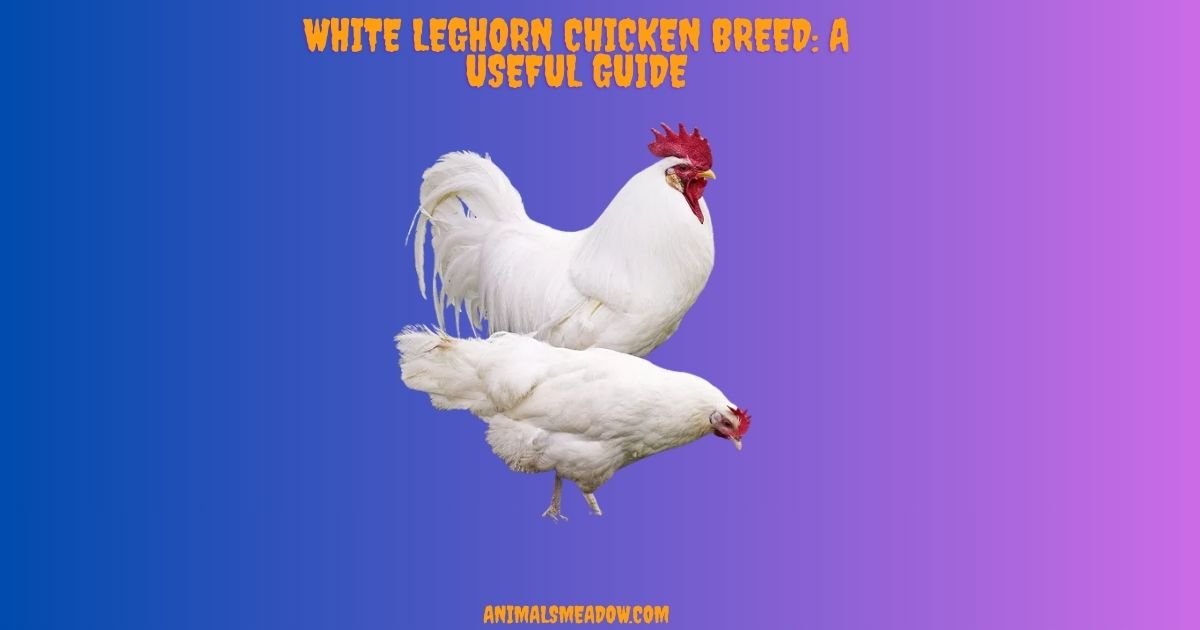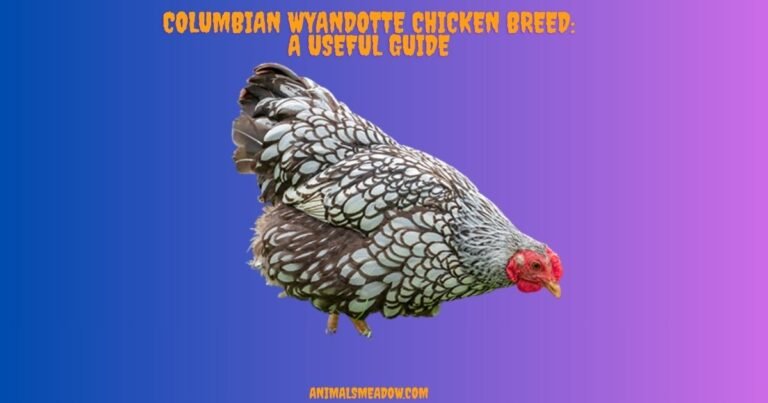White Leghorn Chicken Breed: A Useful Guide
When you stroll through the aisles of your local grocery store, it’s hard to miss the stark contrast between white eggs and their brown counterparts. Ever wondered why those pristine, snowy shells dominate the shelves? The answer lies largely in one remarkable breed: the White Leghorn chicken.
Renowned for its prolific egg laying capabilities and distinctive characteristics, this bird has become synonymous with commercial egg production in the United States.
In this useful guide, we will explore everything you need to know about the White Leghorn chicken breed from its unique characteristics to tips on raising your own and uncover why these chickens have won over producers and consumers alike in the quest for clean, reliable egg production.
White leghorn characteristics
The most prominent feature of the white leghorn is its high egg production.
History of Leghorn Chicken Breed
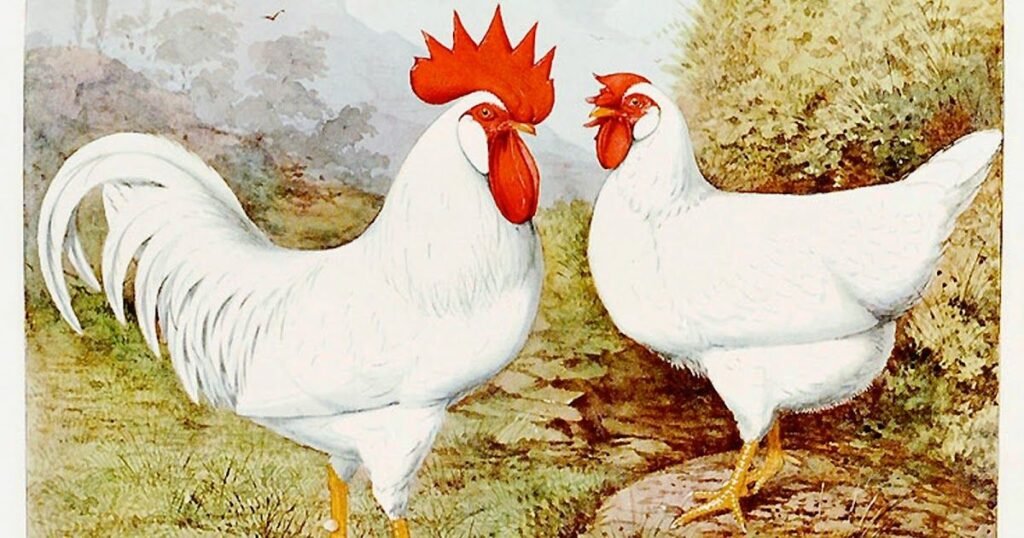
What is clear is that by the mid-1820s, these hardy birds caught the attention of American poultry enthusiasts when they were first exported to North America. Their introduction marked a pivotal moment in avian agriculture; Leghorns quickly demonstrated an extraordinary capacity for egg production coupled with a striking array of feather colors.
Their fascinating history reflects a remarkable journey from the Italian countryside to becoming icons of efficiency and beauty on North American soil while continuing to inspire new generations of chicken keepers eager for sustainable farming practices and companionship among animals.
Are Leghorn Chickens a Heritage Breed or Hybrids?
Leghorn chickens are indeed considered a heritage breed, particularly the traditional varieties that have been recognized since the late 19th century. The American Poultry Association first acknowledged Leghorns in the 1870s, highlighting their significance in poultry history.
These birds are known for their excellent egg laying capabilities and hardiness, characteristics that made them popular among early poultry keepers.
It’s important to note that while traditional Leghorns are classified as heritage breeds, there are also hybrid strains of Leghorns that have been developed for specific traits such as increased egg production or faster growth rates.
These hybrids often prioritize productivity over the historical traits associated with purebred Leghorns. Therefore, when discussing Leghorns, it is essential to differentiate between the heritage varieties and modern hybrids to fully understand their role in both agricultural practices and poultry breeding.
White Leghorn Chicken Breed Appearance
The White Leghorn, a pinnacle of poultry aesthetics, boasts a delightful array of features that embody both elegance and practicality. Originating in Italy before making their way to American farms, these birds have become synonymous with prolific egg production and striking visual appeal.
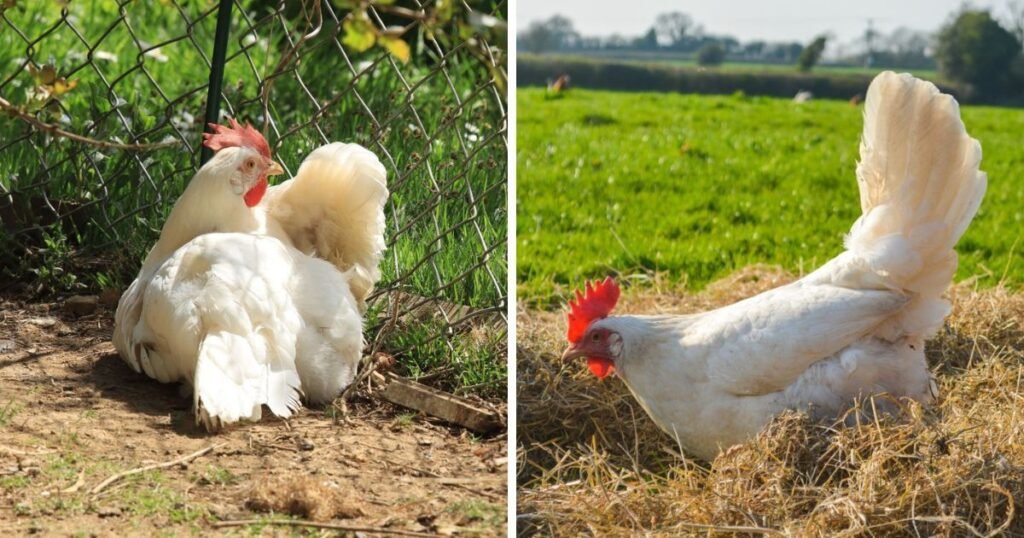
With their distinctive large floppy red combs, even the hens stand out as bold personalities in the coop; this characteristic not only enhances their charm but also underscores their adaptability to various climates.
Read Also : Plymouth Barred Rock Chicken Breed
How Much Do Leghorn Chickens Weigh?
Leghorn chickens are known for their efficient egg production and active nature, and their weight reflects their functional design. On average, Leghorn roosters weigh around 8 pounds, while hens typically weigh about 5 pounds.
This places them in the realm of average-sized chicken breeds, as standard weights for roosters generally hover around 6 pounds and hens at approximately 5.7 pounds.
The slightly heavier weight of Leghorn roosters can be attributed to their robust build and active lifestyle, which is characteristic of this breed. While they may not be the largest chickens available, their agility and productivity make them a popular choice among poultry enthusiasts and farmers alike.
If you’re considering adding Leghorns to your flock, you can expect these birds to be lively and efficient layers!
Average Leghorn Chicken Lifespan
The average Leghorn chicken lifespan typically hovers around 4 to 6 years, which is slightly above the general life expectancy of backyard chickens, usually ranging from 3 to 7 years. This longevity is often a reflection of their resilient nature; It’s important to recognize that high egg production takes a significant toll on their health and bodies.
Just like Isa Browns, Leghorns sacrifice long-term vitality for exceptional productivity; laying an impressive number of eggs per year can strain their reproductive systems and overall well being.
Interestingly, the correlation between age and egg production becomes quite pronounced as the hens mature. While younger Leghorns may lay at peak efficiency in their prime years, many owners note that once these prolific layers begin to age past two or three years, there’s a clear decline not only in how frequently they produce eggs but also in their health condition.
As they transition into older birds, factors such as decreased egg output can contribute significantly to reduced lifespans. Therefore, it becomes vital for chicken keepers to understand this balance: nurturing these remarkable layers while being mindful of the physical demands placed upon them as egg laying machines.
Which Color is Leghorn Chicken Eggs?
Leghorn chickens are well-known for their prolific egg laying capabilities, and they typically produce white eggs. This characteristic is one of the defining traits of the breed, making them a popular choice among commercial egg producers.
The white color of the eggs is due to the genetics of the Leghorn breed, which influences the pigmentation of the eggshell.
How many eggs do white leghorns lay?
Leghorn chickens are known for their impressive egg-laying capabilities, making them a popular choice among poultry enthusiasts. On average, you can expect a Leghorn hen to lay about four large white eggs per week.
This consistent production means that over the course of their first year, a healthy Leghorn can yield between 280 to 320 eggs, provided they receive proper nutrition and care.
Can Leghorn Chickens Breed?
Yes, Leghorn chickens can breed naturally without the need for human intervention or artificial insemination. Leghorns can breed naturally, their lack of broodiness means that if you’re looking to hatch chicks, you might need to consider using an incubator or introducing a broody hen from another breed to care for the eggs.
Leghorns are efficient breeders and can contribute significantly to a flock’s population when managed properly.
Are Leghorn Hens Broody?
Leghorn hens are generally not known for being broody, and this trait has been intentionally bred out over generations. Breeders have focused on enhancing their egg-laying capabilities, which means that these birds prioritize producing eggs over incubating them.
As a result, if you’re looking for hens that will sit on their eggs and raise chicks, Leghorns might not be the best choice.
Are Leghorn Chickens Hardy?
Leghorn chickens are generally considered to be a hardy breed, particularly in terms of their adaptability and resilience in various environments. They thrive in warm climates due to their lightweight bodies and large wattles, which help dissipate heat. This same physical trait makes them less suited for extremely cold conditions.
While they can tolerate moderate cold, Leghorns may struggle in harsher winters, especially if not provided with adequate shelter and protection from the elements.
In terms of disease resistance, Leghorns are not typically regarded as the hardiest breed compared to others like Rhode Island Reds or Orpingtons. They can be susceptible to certain ailments, especially if raised in overcrowded or unsanitary conditions.
To ensure their health and longevity, it’s essential for owners to maintain good biosecurity practices and provide a balanced diet along with proper housing that protects them from extreme weather. Overall, while Leghorns have some strengths as a breed, they do require specific care considerations to thrive optimally.
Common Leghorn Chicken Breed Health Risks
Leghorn chickens, celebrated for their prolific egg-laying abilities, also come with some health vulnerabilities that potential breeders should keep in mind. One of the most pressing issues they face is frostbite on their combs and wattles.
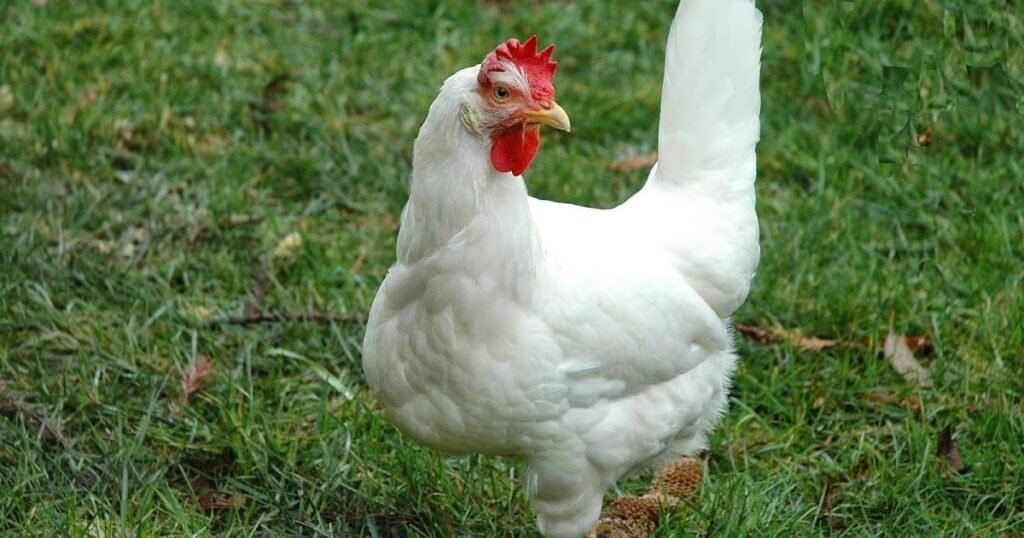
Due to their naturally large, fleshy features that are prone to freezing in harsh winters, these birds may suffer significant pain and discomfort if not adequately protected. Implementing preventive measures such as providing shelter from drafts and ensuring proper bedding can mitigate this risk though no solution is completely fail proof.
In addition to environmental challenges, Leghorns benefit greatly from a well balanced diet supplemented with vitamins dissolved in water. This practice enhances their overall health by strengthening their immune systems and promoting feather growth during cold seasons, thereby reducing susceptibility to ailments. However, neglecting these precautions could lead not only to immediate health complications but also to a shortened lifespan due to chronic stressors.
By being proactive about Leghorn chicken care stemming from the breed’s origins in Italy where adaptability was crucial, owners can strike a balance between productivity and welfare for these spirited birds.
Are Leghorn Chickens Good For Meat Production?
Leghorn chickens are primarily known for their exceptional egg-laying capabilities rather than their meat production. These birds are highly efficient layers, often producing a large number of white eggs throughout the year.
While they do have some meat on their bones, they are not bred specifically for meat, which means that their growth rate and overall size may not be as favorable when compared to traditional meat breeds like Broilers.
Are Leghorn Chickens Noisy?
Leghorn chickens are indeed known for being quite vocal, making them less suitable for densely populated urban areas. These birds are naturally chatty and can produce a range of sounds, from clucks to squawks, which can be particularly pronounced during the day. Roosters, in particular, are notorious for their crowing, which can occur at all hours and may disturb neighbors who aren’t accustomed to farm life.
If you’re considering raising Leghorns in an urban environment, it’s important to keep in mind that their noisiness could lead to complaints from neighbors or even local ordinances against keeping poultry.
For those living in quieter suburban or rural settings, however, Leghorns can be a delightful addition due to their hardiness and excellent egg-laying capabilities. Ultimately, if noise is a concern for your living situation, you might want to explore quieter breeds instead.
Leghorn Chicken Temperament
Leghorn chickens, particularly the white variety, are often praised for their gentle temperament, making them a favorite among backyard poultry enthusiasts. Despite their laid-back demeanor, it’s essential to recognize that they can display assertive behavior when necessary especially during interactions with more dominant breeds like Barred Rocks or Marans.
In our flock, our Leghorn hen holds the fifth position in the pecking order but remains remarkably calm and tolerant around children who have developed a comfort level with animals.
What sets Leghorns apart is not just their striking white plumage but also their impressive adaptability to various environments while maintaining a sweet disposition. They thrive under human care and often engage willingly without showing signs of aggression unless provoked.
This unique blend of gentleness paired with a strong sense of self allows Leghorns to coexist peacefully, even sharing space with roosters who may sometimes display more aggressive behaviors. Their amiable nature makes them an excellent choice for families seeking feathered companions that can foster positive interactions and teach responsibility in caring for living beings.
Leghorn Chicken Housing Requirements
When it comes to housing Leghorn chickens, particularly the iconic white Leghorn variety, understanding their spatial needs is key to keeping them healthy and productive. Each bird requires at least 4 square feet in the coop to ensure they have enough room to move without feeling cramped.
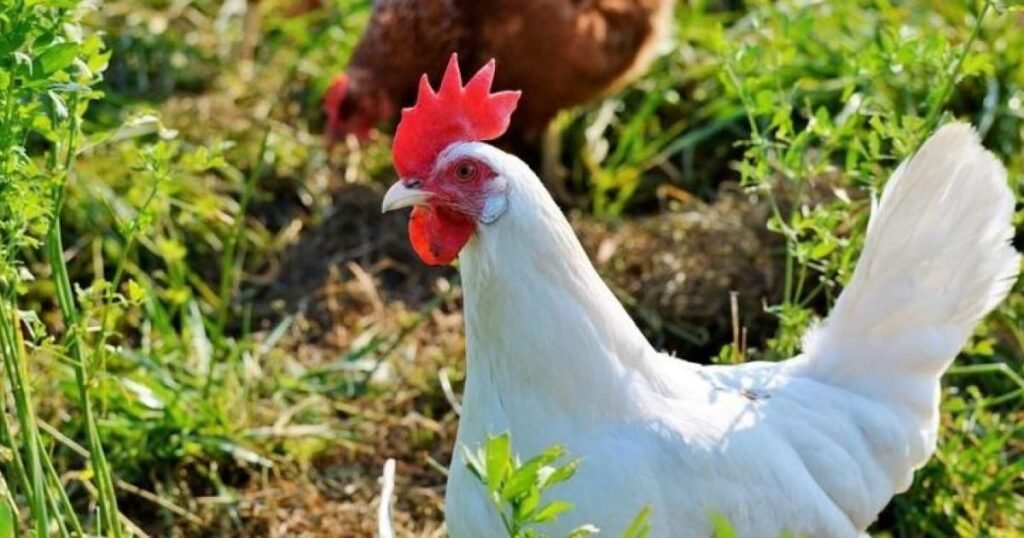
The coop itself should be secure, draft-free yet well ventilated to create a comfortable environment where these hardy birds can feel safe at night. While many might assume chickens need extra warmth, it’s crucial to remember that Leghorns are quite resilient and can manage without heating as long as drafts are eliminated.
For optimal mental well-being and overall happiness, providing an enclosed run of about 10 square feet per bird is also recommended. This space allows your Leghorns to forage and engage in natural behaviors like scratching and dust bathing, which is especially important during those sweltering summer days when temperatures soar above 90 degrees.
A spacious run also helps prevent boredom-related issues; providing environmental enrichment such as perches or hanging greens can enhance their quality of life. By prioritizing these housing needs, you not only foster a thriving flock but also enjoy witnessing the remarkable characteristics of white Leghorns known for their agility and prolific egg-laying abilities in action!
Are Leghorn Chickens Right For You?
Leghorn chickens can be an excellent choice for beginners, especially if your primary goal is egg production. Known for their prolific laying capabilities, Leghorns can produce around 280 to 300 eggs per year, making them one of the top egg-laying breeds.
Their hardiness and adaptability also make them relatively low maintenance, which is a significant advantage for new chicken owners who may still be learning the ropes of poultry care.
It’s essential to consider your overall goals with keeping chickens. If you’re looking for a dual-purpose breed that provides both meat and eggs, Leghorns may not be the best fit since they are primarily bred for egg production and don’t yield much meat.
Their active nature means they require space to roam and forage. If you have the right environment and are focused on maximizing egg output rather than meat production, then Leghorns could very well be the right choice for you.
Conclusion
The White Leghorn chicken breed stands out as a prolific egg layer and a hardy bird, making it a preferred choice for both commercial farmers and backyard poultry enthusiasts.
Their adaptability to various environments and minimal care requirements further enhance their appeal.
With their friendly disposition, they can be a delightful addition to any flock. By understanding their needs and characteristics, you can ensure that your White Leghorns thrive and contribute effectively to your poultry goals. So why not consider adding these remarkable birds to your yard today?
FAQs
Are white Leghorns good egg layers?
Yes, white Leghorns are indeed excellent egg layers, renowned for their prolific production capabilities. These birds can lay an impressive number of eggs often exceeding 300 per year making them a favorite among commercial egg producers and backyard enthusiasts alike.
Is White Leghorn a broiler?
White Leghorns are primarily known as a layer breed, renowned for their high egg production capabilities. They are not considered broilers, which are chickens specifically bred for meat production.
Which chicken is best for egg production?
When it comes to egg production, the White Leghorn is often considered the best among the leghorn varieties. Known for their prolific laying capabilities, White Leghorns can produce around 280 to 300 eggs annually, making them one of the top choices for commercial egg production.
What is the main use of White Leghorn chicken?
White Leghorn chickens are primarily known for their exceptional egg-laying capabilities, making them a staple in commercial poultry production.

